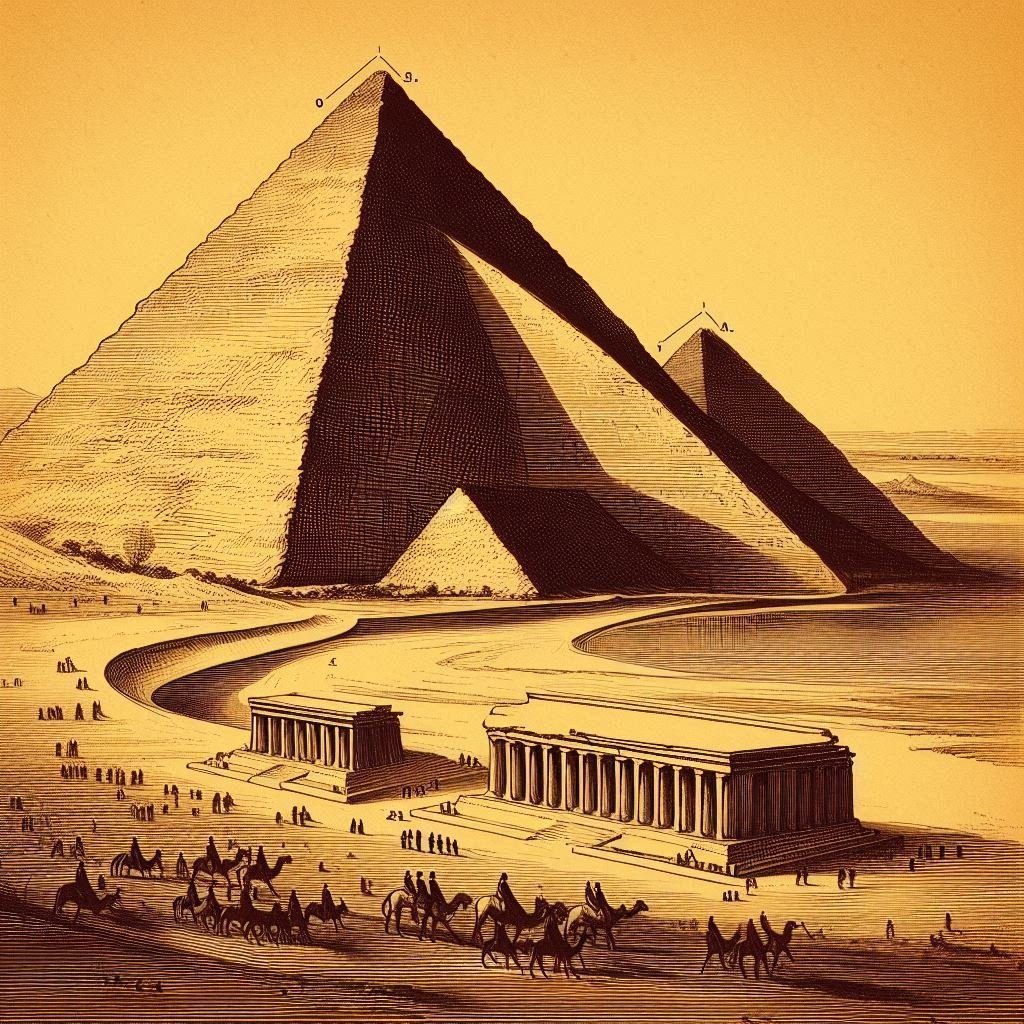When most people think of Egyptian pyramids, the Great Pyramid of Giza is often the first to come to mind. However, the Giza Plateau is just one part of Egypt’s rich tapestry of ancient structures. There are numerous other notable pyramids in Egypt, each with its unique history, architecture, and significance. In 2024, the exploration and study of these other notable pyramids in Egypt continue to reveal the complexities and wonders of ancient Egyptian civilization.
The Pyramid of Djoser
One of the most significant other notable pyramids in Egypt is the Pyramid of Djoser, located in the Saqqara necropolis. Built during the Third Dynasty for Pharaoh Djoser by his architect Imhotep, this pyramid is often regarded as the world’s oldest colossal stone structure. Unlike the smooth-sided pyramids of Giza, the Pyramid of Djoser is a step pyramid, consisting of six mastabas stacked atop one another. This design represents a crucial evolutionary step in pyramid construction, showcasing the early advancements in monumental architecture.
The Bent Pyramid
Another fascinating example among the other notable pyramids in Egypt is the Bent Pyramid at Dahshur. Constructed during the reign of Pharaoh Sneferu, the Bent Pyramid is unique due to its unusual shape. The lower portion rises at a steep angle, while the upper section transitions to a shallower incline. This change in angle gives the pyramid its characteristic bent appearance. Scholars believe this alteration was made to avoid structural instability, making the Bent Pyramid a key study in ancient engineering techniques.

The Red Pyramid
Located near the Bent Pyramid, also in Dahshur, is the Red Pyramid, another of Sneferu’s constructions and an essential part of the collection of other notable pyramids in Egypt. This pyramid is notable for being the first successful attempt at constructing a true smooth-sided pyramid. Named for the reddish hue of its limestone blocks, the Red Pyramid stands as a testament to the architectural progression that culminated in the construction of the Giza pyramids. Its significance lies in its role as a precursor to the more famous structures that followed.
The Pyramid of Meidum
The Pyramid of Meidum is another intriguing entry in the list of other notable pyramids in Egypt. Initially constructed as a step pyramid, it was later converted into a true pyramid. However, much of its outer casing has collapsed, leaving it with a distinctive tower-like appearance. This pyramid is attributed to Pharaoh Sneferu and is believed to have been an experimental phase in the development of pyramid construction techniques. Despite its current ruined state, the Pyramid of Meidum provides valuable insights into the early attempts to perfect pyramid architecture.
The Pyramid of Unas
Situated in the Saqqara necropolis, the Pyramid of Unas is smaller than many of its contemporaries but holds immense historical significance. Built for Pharaoh Unas, the last ruler of the Fifth Dynasty, this pyramid is renowned for the Pyramid Texts inscribed on the walls of its burial chamber. These texts are the oldest known religious writings from ancient Egypt, making the Pyramid of Unas a vital source of information about early Egyptian beliefs and funerary practices. The discovery of these texts has significantly enhanced our understanding of ancient Egyptian religion and the afterlife.
The Pyramid of Senusret II
Among the other notable pyramids in Egypt, the Pyramid of Senusret II at El-Lahun stands out for its unique construction and archaeological discoveries. Built during the Twelfth Dynasty, this pyramid features a mudbrick core encased in limestone. Excavations at the site have revealed a wealth of artifacts, including jewelry, pottery, and tools, providing a glimpse into the daily life and burial customs of the Middle Kingdom period. The Pyramid of Senusret II also exemplifies the diversity in pyramid construction techniques and materials used throughout Egyptian history.


The Pyramid of Amenemhat III
The Pyramid of Amenemhat III, also known as the Black Pyramid, is another important structure among the other notable pyramids in Egypt. Located at Dahshur, this pyramid is distinguished by its dark-colored mudbrick core. Though it has suffered significant damage over time, it remains an essential study for understanding the Middle Kingdom’s architectural and engineering advancements. The complex surrounding the pyramid includes mortuary temples and subsidiary pyramids, highlighting the intricate planning and religious significance of these burial sites.
Modern Discoveries and Technologies
In 2024, advancements in archaeological techniques and technologies have allowed researchers to uncover new information about these other notable pyramids in Egypt. Ground-penetrating radar, 3D mapping, and other non-invasive methods have revealed hidden chambers, passageways, and artifacts within these ancient structures. These discoveries continue to provide fresh insights into the construction methods, cultural practices, and historical context of ancient Egypt.
One of the most exciting recent developments is the use of muon radiography, a technique that utilizes cosmic rays to create detailed images of the internal structures of pyramids. This method has already led to the discovery of previously unknown voids and corridors within the Great Pyramid of Giza and holds great potential for further exploration of other notable pyramids in Egypt.
Cultural and Historical Significance
The other notable pyramids in Egypt collectively contribute to our understanding of the evolution of ancient Egyptian society, architecture, and religious practices. Each pyramid reflects the innovations and challenges of its time, offering a unique glimpse into the past. These structures are not only architectural marvels but also repositories of cultural and historical knowledge, preserving the legacy of the pharaohs and their civilization.
Tourism and Preservation
In 2024, Egypt’s other notable pyramids continue to attract tourists from around the world, eager to explore these ancient wonders. Tourism plays a vital role in the country’s economy, providing jobs and supporting local communities. However, the increased foot traffic also poses challenges for preservation. Conservation efforts are crucial to protect these monuments from environmental and human-induced damage.
The Egyptian government, in collaboration with international organizations, is dedicated to preserving these other notable pyramids in Egypt. Conservation projects focus on stabilizing structures, restoring damaged sections, and preventing further deterioration. Public awareness campaigns and educational programs are also essential in promoting the significance of these historical sites and encouraging responsible tourism practices.
Conclusion
The other notable pyramids in Egypt, from the Pyramid of Djoser to the Pyramid of Amenemhat III, represent a rich tapestry of architectural innovation, cultural significance, and historical legacy. In 2024, these ancient structures continue to captivate and inspire, offering valuable insights into the achievements and complexities of ancient Egyptian civilization. Through ongoing research, preservation, and responsible tourism, we ensure that these remarkable monuments remain a testament to human ingenuity and a source of wonder for future generations. Exploring the other notable pyramids in Egypt allows us to appreciate the diversity and richness of Egypt’s ancient heritage, deepening our connection to one of the world’s greatest civilizations.